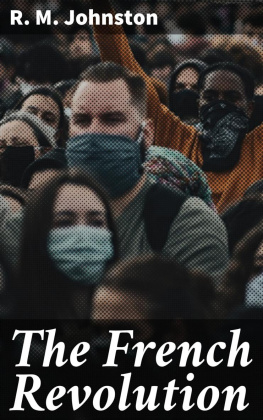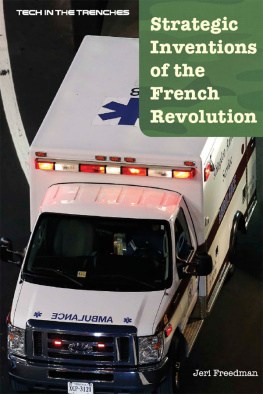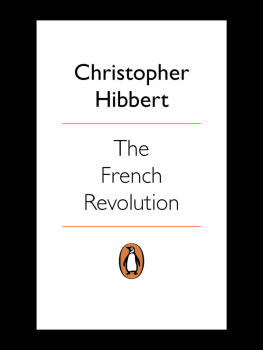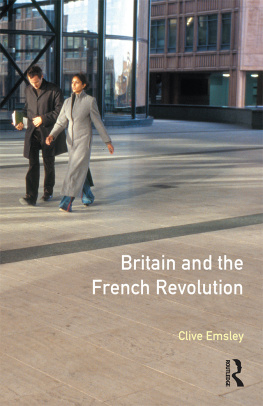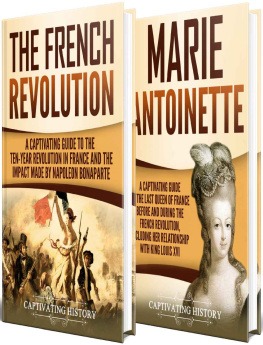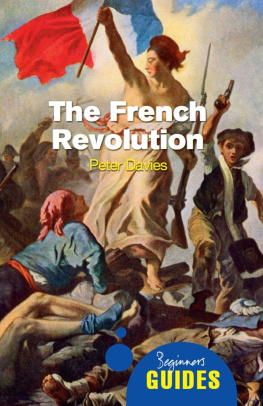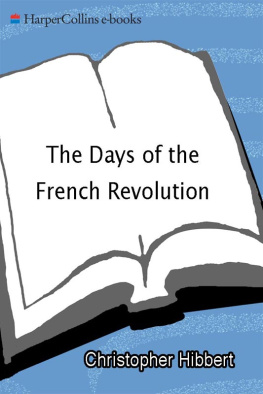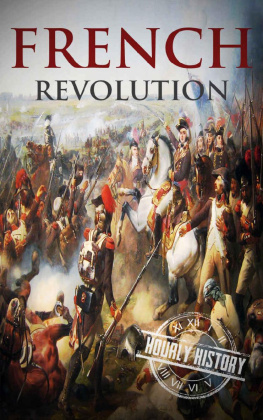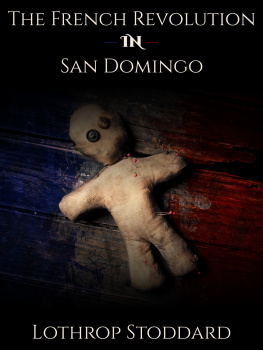Spang - Stuff and Money in the Time of the French Revolution
Here you can read online Spang - Stuff and Money in the Time of the French Revolution full text of the book (entire story) in english for free. Download pdf and epub, get meaning, cover and reviews about this ebook. City: London;Cambridge;Mass, year: 2015, publisher: Harvard University Press, genre: Romance novel. Description of the work, (preface) as well as reviews are available. Best literature library LitArk.com created for fans of good reading and offers a wide selection of genres:
Romance novel
Science fiction
Adventure
Detective
Science
History
Home and family
Prose
Art
Politics
Computer
Non-fiction
Religion
Business
Children
Humor
Choose a favorite category and find really read worthwhile books. Enjoy immersion in the world of imagination, feel the emotions of the characters or learn something new for yourself, make an fascinating discovery.

- Book:Stuff and Money in the Time of the French Revolution
- Author:
- Publisher:Harvard University Press
- Genre:
- Year:2015
- City:London;Cambridge;Mass
- Rating:3 / 5
- Favourites:Add to favourites
- Your mark:
- 60
- 1
- 2
- 3
- 4
- 5
Stuff and Money in the Time of the French Revolution: summary, description and annotation
We offer to read an annotation, description, summary or preface (depends on what the author of the book "Stuff and Money in the Time of the French Revolution" wrote himself). If you haven't found the necessary information about the book — write in the comments, we will try to find it.
Spang: author's other books
Who wrote Stuff and Money in the Time of the French Revolution? Find out the surname, the name of the author of the book and a list of all author's works by series.
Stuff and Money in the Time of the French Revolution — read online for free the complete book (whole text) full work
Below is the text of the book, divided by pages. System saving the place of the last page read, allows you to conveniently read the book "Stuff and Money in the Time of the French Revolution" online for free, without having to search again every time where you left off. Put a bookmark, and you can go to the page where you finished reading at any time.
Font size:
Interval:
Bookmark:
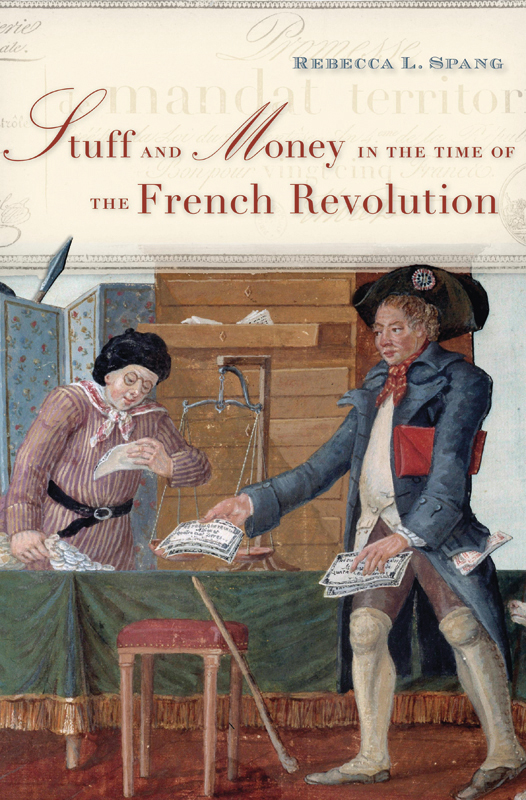
in the Time
of the French Revolution


Cambridge, Massachusetts
London, England
2015
Copyright 2015 by the President and Fellows of Harvard College
All rights reserved
Cover art: (top) Bibliothque Nationale de France; (bottom) Fol. 55 Country Folk and the Money Changer (gouache on card), Lesueur Brothers / Muse de la Ville de Paris, Muse Carnavalet, Paris, France / Giraudon / The Bridgeman Art Library
Cover design: Lisa Roberts
The Library of Congress has cataloged the printed edition as follows:
ISBN: 978-0-674-04703-7 (alk. paper)
- . Jean-Antoine Houdon, Bust of a Young Girl, Identified as Anne Audoud of Geneva (ca. 17791781), plaster, photo The Metropolitan Museum of Art. Source: Art Resource, NY.
- . French cu (1789), photo courtesy of Bibliothque Nationale de France, Paris.
- . Franois Quesnay, Tableau Oeconomique (1759), photo courtesy of Bibliothque Nationale de France, Paris.
- . Model for the first assignats from Proclamation du Roi du 7 mars 1790, in Collection gnrale des dcrets rendus par lAssemble nationale et sanctionns ou accepts par le Roi (Paris: Baudouin, 17891794), vol. 4, 42, photo courtesy of Bibliothque Nationale de France, Paris.
- . Money-assignat, 200 livres (1790), photo courtesy of Bibliothque Nationale de France, Paris.
- . Assassins of the Clergy (1790), photo courtesy of Bibliothque Nationale de France, Paris.
- . The Triumph of Patriotism (17901791), photo courtesy of Bibliothque Nationale de France, Paris.
- . Augustin de Saint Aubin, Louis XVI, King of the French (1790), photo courtesy of Bibliothque Nationale de France, Paris.
- . Assignat, 1,000 livres (1790), photo courtesy of Bibliothque Nationale de France, Paris.
- . Map, number of known, discreet issuers of billets de confiance in 17901792, compiled by the author on the basis of Jacqueline Pilet-Lemire and Claude Jigan, Les Billets communaux de la France rvolutionnaire, 17901793, vol. 1, of Collections montaires du muse de Normandie (Caen: Muse de Normandie, 1989).
- . Bill issued by Caisse Patriotique de Niort, Deux Svres (1791?), Muse de Normandie, Caen (Calvados); photo by author.
- . Bills issued by the district of LAigle, Orne (17911792), Muse de Normandie, Caen (Calvados); photo by author.
- . Bill issued by the city of Toulouse, Haute Garonne (1792), Muse de Normandie, Caen (Calvados); photo by author.
- . Assignat for 300 livres and a counterfeit of same; authors collection; photo by P. David Polly.
- . Louis XVI arrested while eating pigs feet (1791), photo courtesy of Bibliothque Nationale de France, Paris.
- . Sheet of five-livre assignats (1791), photo courtesy of Bibliothque Nationale de France, Paris.
- . The money seller beaten in the Palais Royal (1791), photo courtesy of Bibliothque Nationale de France, Paris.
- . No treasure, just a few fat sous (1791), photo courtesy of Bibliothque Nationale de France, Paris.
- . Jean-Baptiste Lesueur, The farmers sold their crops for huge sums and then exchanged their assignats for silver (ca. 1793), opaque watercolor on cardboard. Muse Carnavelet (Paris). Scala/White Images/Art Resource, NY.
- . Assignat for 250 livres (1793), photo courtesy of Bibliothque Nationale de France, Paris.
- . Corset, or assignat for five livres (1791), photo courtesy of Bibliothque Nationale de France, Paris.
- . Jean-Baptiste Lesueur, The Shortage of Bread in Year Four and A Money Seller Buys Final Effects (ca. 1795), opaque watercolor on cardboard. Muse Carnavelet (Paris). Scala/White Images/Art Resource, NY.
- . Promises for territorial mandats (1796), photo courtesy of Bibliothque Nationale de France, Paris.
- . Trompe loeil with assignats and other papers (1797?), photo courtesy of Bibliothque Nationale de France, Paris.
- . Philippe-Joseph Maillart, Moneys and Other Papers of the French Republic: A Picture-Table Showing Variations in the Value of the Assignats (1797), photo courtesy of Bibliothque Nationale de France, Paris.
- .
- . Use of the New Measures (1800?), photo courtesy of Bibliothque Nationale de France, Paris.
Money in its significant attributes is, above all, a subtle device for linking the present to the future.
John Maynard Keynes, The General Theory of Employment, Interest, and Money (1936)
Stuff. The substance or material (whether corporeal or incorporeal) of which a thing is formed or consists, or out of which a thing may be fashioned. [as in] Shakespeare, Tempest (1623): iv.i. We are such stuffe As dreames are made on.
Oxford English Dictionary
THE NUMISMATIC HISTORY of the French Revolution begins with an event that never happened: the opening of the Estates-General on April 26, 1789. For the first time in 175 years, the king of France had called on his subjects to send delegates to a representative body that would convene in Versailles. On the scheduled opening day, tin commemorative tokens (made to be sold as souvenirs in the streets) were ready but the representatives were not: bad weather, poor roads, and protracted electioneering combined to delay the assemblys first session by a week. Planned for April, the kings formal welcome of the Estates actually happened in May.
The first coin described in Michel Hennins Histoire numismatique de la rvolution franaise (1826) is one of those tin tokens proudly recalling the events of April 26, 1789. While it is not chronologically accurate, it teaches us about history nonetheless. For this object reminds us that history rarely happens in accord with peoples anticipations. The now Or, as one might say in the less eloquent vernacular of our own moment: stuff happens.
By approaching the history of the French Revolution through coins, medals, and tokens, Hennin claimed to be avoiding politics. A book of this nature, he wrote, cannot be a work of political controversy. It must present only the facts relating to each of these monuments. In imagining that moneys history could be divorced from controversy, the nineteenth-century diplomat shared more with classical and neoclassical economists than he chose to admit. Antiquarian numismatists and orthodox economists alike treat money as politically, socially, and economically neutral. The latter, for instance, maintain money has no effect on the real economy in which goods are produced and consumed. In contrast, this book treats money as politically, socially, and economically charged. It argues that money mediates relations between individuals and that its quantitative functions always and only have value within specific social and cultural contexts. Money, in other words, is not only a measurement or an aspect of economic life. Money is also a part of history. It both has a history itself and is one of the tools through which people know the past and imagine the future (as the epigraph from Keynes suggests). That these latter forms of mental activity are rarely fully conscious simply means they are all the more entrenched. It often takes a dramatic upheaval, something on the scale of what we today call a revolution, to make these thought processes more evident.
Font size:
Interval:
Bookmark:
Similar books «Stuff and Money in the Time of the French Revolution»
Look at similar books to Stuff and Money in the Time of the French Revolution. We have selected literature similar in name and meaning in the hope of providing readers with more options to find new, interesting, not yet read works.
Discussion, reviews of the book Stuff and Money in the Time of the French Revolution and just readers' own opinions. Leave your comments, write what you think about the work, its meaning or the main characters. Specify what exactly you liked and what you didn't like, and why you think so.

